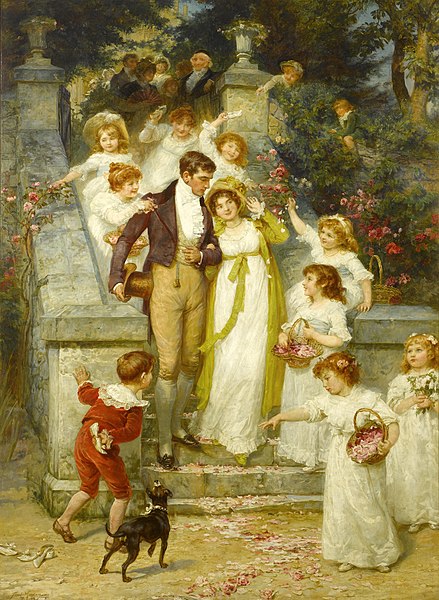One
of several posters to promote family formation in the dwindling Parsi community
(Jiyo Parsi)
In
India, and overseas, the Parsis are renowned for their achievements,
particularly in business but also in science, culture, and philanthropy.
They are also known for something else: they’re dying out. From 114,000 in 1941, they were down to half that number by 2011. Today, more than 30% of Parsis don't marry, and an equal proportion are over 60 years old. Their fertility rate is 0.8—in other words, the average Parsi woman gives birth to less than one child during her lifetime. This existential crisis is worrying not only the Parsis but also the Indian government. In 2013, a program was set up to subsidize fertility treatments and promote family formation in the community (Dore 2017).
They are also known for something else: they’re dying out. From 114,000 in 1941, they were down to half that number by 2011. Today, more than 30% of Parsis don't marry, and an equal proportion are over 60 years old. Their fertility rate is 0.8—in other words, the average Parsi woman gives birth to less than one child during her lifetime. This existential crisis is worrying not only the Parsis but also the Indian government. In 2013, a program was set up to subsidize fertility treatments and promote family formation in the community (Dore 2017).
Extinction
is irreversible. If the Parsis die out, the loss will be greatest in those
things we don’t fully understand: the workings of the human mind. That is
precisely where the Parsis have succeeded the most. How much of that success
has been due to learning and how much to innate factors?
A
few steps toward an answer were taken by Greg Cochran and Henry Harpending in
their paper on Ashkenazi intelligence:
Since strong selection for IQ seems to be unusual in humans (few populations have had most members performing high-complexity jobs) and since near-total reproductive isolation is also unusual, the Ashkenazim may be the only extant human population with polymorphic frequencies of IQ-boosting disease mutations, although another place to look for a similar phenomenon is in India. In particular, the Parsi are an endogamous group with high levels of economic achievement, a history of long-distance trading, business and management, and who suffer high prevalences of Parkinson disease, breast cancer and tremor disorders, diseases not present in their neighbours. (Cochran et al. 2006)
Such
disorders may be a side-effect of strong selection for intelligence over a
short time in a small population. This was historically the case with Ashkenazi
Jews. They are unusually prone to four neurological disorders: Tay-Sachs,
Gaucher, Niemann-Pick, and mucolipidosis type IV. All four affect the brain by
increasing the capacity of lysosomes to store sphingolipid compounds for axonal
growth and branching. Furthermore, Tay-Sachs is caused in Ashkenazi Jews by two
unrelated mutations and Gaucher disease by five. Random chance simply cannot
explain why so many mutations exist in the same metabolic pathway and have reached
such high frequencies.
Those
mutations apparently spread through heterozygote advantage. Though harmful when
two copies are inherited from both parents, they are beneficial when only one
copy is inherited, as is more often the case. With a better supply of sphingolipids
and no adverse effects, the brain can process information more efficiently.
Jared
Diamond (1994) was the first to argue that chance cannot explain the high
prevalence of so many lysosome storage disorders in a single population. He suggested
the cause was selection for intelligence. His theory was then developed by
Cochran et al. (2006). Other researchers have further confirmed Diamond’s
theory by showing that Ashkenazim have high frequencies of alleles associated
with educational attainment (Dunkel et al. 2019; Piffer 2019).
Frequent
neurological/cerebral diseases among the Parsis
We
see a similarly high prevalence of neurological or cerebral diseases among the
Parsis. Parkinson’s disease is considerably more prevalent among them than
among other Indians or even people of developed countries. Strokes are at least
twice as common. Essential tremors are exceptionally frequent (Gourie-Devi
2014).
These
diseases seem to have a genetic basis among the Parsis. A mitochondrial genome
study found 420 unique genetic variants within that community, 178 of which are
associated with Parkinson's disease. Others are linked to other
neurodegenerative disorders, as well as colon, breast, and prostate cancer. A
surprising number of these unique variants, 217, are linked to increased longevity.
Finally, and perhaps curiously, some variants are linked to asthenozoospermia,
i.e., reduced sperm motility (Patell 2020)
The
above results are consistent with the findings of an earlier genetic study of
the Parsis, specifically their autosomal, Y chromosome, and mitochondrial DNA.
Signals of selection were strongest in SNPs associated with humoral immunity,
cerebellar physiology, and neurological disorders like early epilepsy (Lopez et
al. 2017).
Conclusion
The
evidence is only suggestive, but it looks like the Parsis have undergone strong
selection for intelligence over a relatively short time; hence, the high
prevalence of neurological disorders.
In
addition, this community seems to have adapted to its economic and social niche
through a "slow life history" strategy. The Parsis are predisposed to
live longer and thus learn more over a longer time. They may also be
predisposed to longer birth intervals and higher parental investment in each
child (K selection). Such a reproductive strategy is consistent with lower male
fertility.
A
slower life history, combined with higher intelligence, may have assisted the trading
lifestyle of the Parsi community. Trade requires a high level of cognitive
ability, particularly for literacy and numeracy, as well as lower time
preference and a longer learning period.
Ironically,
low time preference may explain the demographic decline of the Parsis, and
other people like them. If you’re future-oriented, you’re also keenly aware of
future costs, particularly those of getting married and having a family. So you’ll
postpone marriage and family formation until you’re financially ready.
Unfortunately, that day may never come. Or it may come too late.
This
problem was known to traditional societies, and there used to be social
incentives to ensure that young people would marry before they got too old. Unfortunately,
those incentives have disappeared in modern societies.
If you wait to
check all the boxes, you may check into an old-age home … alone.
References
Cochran,
G., J. Hardy, and H. Harpending. (2006). Natural history of Ashkenazi
intelligence. Journal of Biosocial
Science 38: 659-693
Diamond,
J.M. (1994). Jewish Lysosomes. Nature
368: 291-292.
Dore,
B. (2017). Glimmer of hope at last for India's vanishing Parsis. BBC News
Dunkel,
C.S., Woodley of Menie, M.A., Pallesen, J., and Kirkegaard, E.O.W. (2019).
Polygenic scores mediate the Jewish phenotypic advantage in educational
attainment and cognitive ability compared with Catholics and Lutherans. Evolutionary Behavioral Sciences 13(4):
366-375.
Gourie-Devi
M. (2014). Epidemiology of neurological disorders in India: review of
background, prevalence and incidence of epilepsy, stroke, Parkinson's disease
and tremors. Neurology India 62(6):
588-598. https://doi.org/10.4103/0028-3886.149365
López,
S., Thomas, M. G., van Dorp, L., Ansari-Pour, N., Stewart, S., Jones, A. L.,
Jelinek, E., Chikhi, L., Parfitt, T., Bradman, N., Weale, M. E., and Hellenthal,
G. (2017). The genetic legacy of Zoroastrianism in Iran and India: insights
into population structure, gene flow, and selection. American Journal of Human Genetics 101(3): 353-368.
Patell,
V.M., N. Pasha, K. Krishnasamy, B. Mittal, C. Gopalakrishnan, R.
Mugasimangalam, N. Sharma, A-K. Gupta, P. Bhote-Patell, S. Rao, R. Jain, and
The Avestagenome Project. (2020). The First complete Zoroastrian-Parsi
Mitochondria Reference Genome: Implications of 2 mitochondrial signatures in an
endogamous, non-smoking population. bioRxiv
preprint doi: https://doi.org/10.1101/2020.06.05.124891
Piffer,
D. (2019). Evidence for Recent Polygenic Selection on Educational Attainment
and Intelligence Inferred from Gwas Hits: A Replication of Previous Findings
Using Recent Data. Psych 1(1): 55-75.








